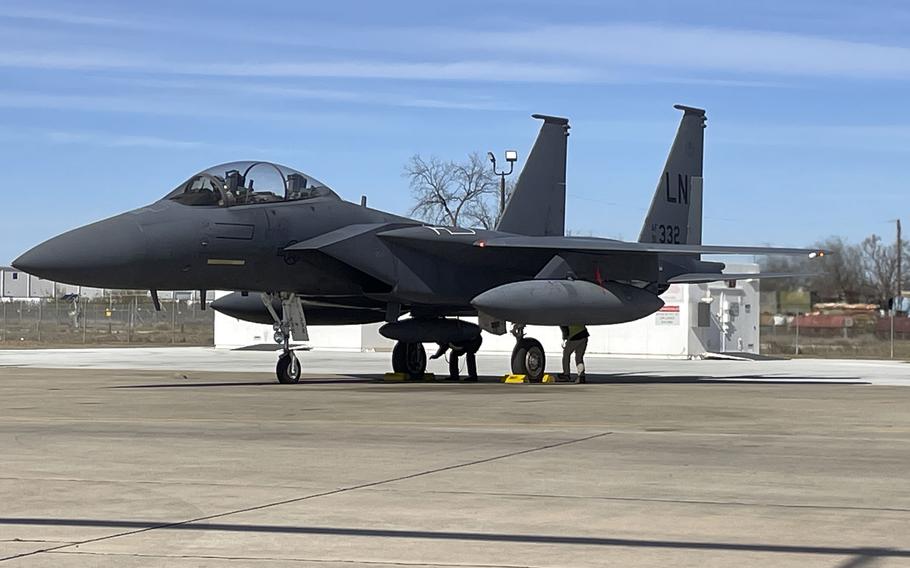Air Force
Advanced electronic warfare system makes Air Force debut in Lakenheath’s F-15E Strike Eagles
Stars and Stripes January 21, 2025

An F-15E Strike Eagle sits on a flight line in San Antonio on Jan. 15, 2025. The aircraft, recently upgraded with a new advanced electronic warfare system, arrived at RAF Lakenheath in England on Jan. 16, 2025. (Boeing)
RAF Lakenheath in England is now home to the first U.S. Air Force F-15E Strike Eagles upgraded with a high-powered electronic warfare system that the service has been eyeing for years.
On Thursday, two of the base’s fourth-generation fighter jets arrived with the Eagle Passive/Active Warning and Survivability System, which is hailed for the increased survivability it provides, according to an Air Force statement Monday.
Each of Lakenheath’s F-15E fighter squadrons received one of the souped-up Strike Eagles, the 48th Fighter Wing said in the statement. The wing hosts two squadrons of F-15E Strike Eagles and two squadrons of F-35A Lightning IIs.
The system, known by the abbreviation EPAWSS, provides more maneuverability and allows pilots to fly deeper into areas protected by modern air defense systems, manufacturer BAE said last year after successful testing.
“The fact the first modifications are delivering to our front-line fighters at RAF Lakenheath is even more critical,” said Brig. Gen. Jason Voorheis, program executive officer for the Air Force Life Cycle Management Center’s Fighters and Advanced Aircraft Directorate.
It is leading the effort to field the new system, which was initially planned for installation in over 200 F-15E jets as part of a $3.4 billion Air Force project dating from around 2017. That contract also included the since-retired F-15C.
EPAWSS is standard equipment on the new F-15EX Eagle II, but the Air Force is also upgrading F-15E Strike Eagles with the advanced technology as well.
“This upgrade significantly enhances the ability of the F-15E to detect and counter threats,” 48th Fighter Wing spokeswoman Maj. Hope Cronin said Tuesday in response to questions. “The EPAWSS system autonomously detects, identifies and locates threat systems and can take proactive measures to deny, degrade and disrupt those threats.”
EPAWSS replaces older technology aimed at countering Cold War-era threats, according to the Air Force. The system comprises two kits, which consist of integrated radar warning and geolocation among other features, the company said.
“We’re using agile software development to provide iterative upgrades to fielded (electronic warfare) systems, allowing our customers to defeat future electromagnetic threats,” Amy Nesbitt, the company’s EPAWSS program manager, said last year.
The Air Force earlier this month authorized full-rate production of EPAWSS under a $615.8 million contract that calls for Boeing to develop 45 kits for the F-15E Strike Eagle fleet, Air and Space Forces Magazine reported Jan. 8.
Initial, low-rate production began in March 2021, under a contract Boeing awarded to BAE Systems.